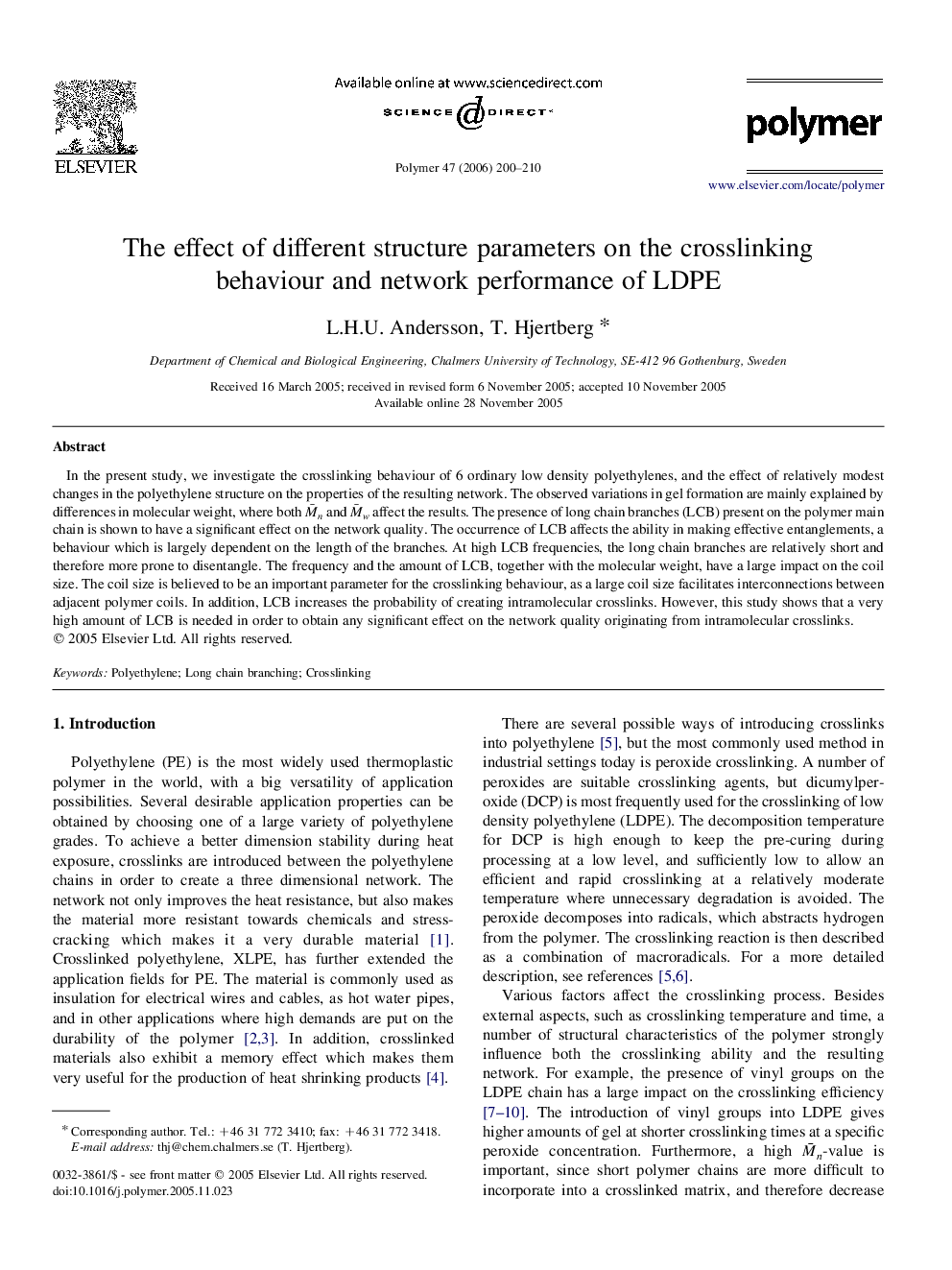| Article ID | Journal | Published Year | Pages | File Type |
|---|---|---|---|---|
| 5190239 | Polymer | 2006 | 11 Pages |
Abstract
In the present study, we investigate the crosslinking behaviour of 6 ordinary low density polyethylenes, and the effect of relatively modest changes in the polyethylene structure on the properties of the resulting network. The observed variations in gel formation are mainly explained by differences in molecular weight, where both M¯n and M¯w affect the results. The presence of long chain branches (LCB) present on the polymer main chain is shown to have a significant effect on the network quality. The occurrence of LCB affects the ability in making effective entanglements, a behaviour which is largely dependent on the length of the branches. At high LCB frequencies, the long chain branches are relatively short and therefore more prone to disentangle. The frequency and the amount of LCB, together with the molecular weight, have a large impact on the coil size. The coil size is believed to be an important parameter for the crosslinking behaviour, as a large coil size facilitates interconnections between adjacent polymer coils. In addition, LCB increases the probability of creating intramolecular crosslinks. However, this study shows that a very high amount of LCB is needed in order to obtain any significant effect on the network quality originating from intramolecular crosslinks.
Related Topics
Physical Sciences and Engineering
Chemistry
Organic Chemistry
Authors
L.H.U. Andersson, T. Hjertberg,
